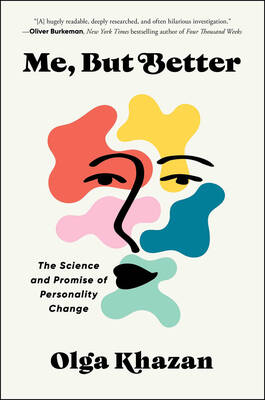Before Bruce Lee (李小龍), there was Ip Man (葉問). The grandmaster of the wing chun (詠春) style of martial arts, Ip Man was Lee’s sifu (師傅), or master.
Ip Man (葉問) is also the name of a film, by Hong Kong action director Wilson Yip (葉偉信), that is aimed at rekindling interest in the master teacher and the 200-year-old martial arts school.
Starring Donnie Yen (甄子丹) as Ip and ace thespians Simon Yam (任達華) and Lam Ka-tung (林家棟), the kung fu flick is loosely based on Ip Man’s early life and is bound to become an action movie legend itself, recalling the past glory of kung fu cinema before CGI effects and “wire-fu” cine spoiled all the fun.
In this fictionalized biopic, Ip Man (Yen) is portrayed as the best of the best in 1930s Foshan, China, a bustling city and home to countless martial arts schools keen to recruit new disciples. Ip Man, an unassuming aristocrat who spends much of his time perfecting his skills, however, never intends to show off kung fu in public and keeps his fighting behind closed doors so as to protect those who might challenge him from the embarrassment of defeat.
The sense of jocundity that dominates the opening half-hour disappears with the outbreak of the Sino-Japanese war. After the Japanese occupy Foshan, the population shrinks from 300,000 to 70,000. In order to support his family living in destitution, Ip Man finds work at a coal mine along with other martial artists, where they are offered bags of rice by Japanese general Miura (Hiroyuki Ikeuchi) if they can win duels against Japanese fighters. But there’s a catch: one may be beaten to death.
Torn between his commitment to his family and his love for his countrymen, Ip Man chooses to fight, taking on Miura in an adrenaline-pumping final battle.
The story is the usual old-school Hong Kong fare, with drama centered on the villainous Japanese pushing around the Chinese and the rebellion of the martial-arts hero who faces his oppressors and kindles patriotism. Fortunately, in the skilled hands of director Yip, what may have been an over-the-top remake is graced by an old-fashioned feel that conjures up the past glory of kung fu cinema. The narrative is smooth and seamlessly moves the plot forward.
Fine storytelling aside, kung fu is at the center of the film. To the credit of action director and veteran martial arts star Sammo Hung (洪金寶), Ip Man is a far cry from the modern-day “wire fu” jammed with unrealistic special effects. Always delivered from close range, the fight scenes show Chinese martial arts as poetry in motion and elicit the “wow-effect” through virtuosity rather than visual stunts.
Kung fu is also in its most diverse form in Hung’s masterfully choreographed action sequences that range from private fights at home and Japanese dojo combat to a factory melee and a ringside duel. Various practitioners from different schools also get in on the action besides the invincible wing chun grandmaster.
Yen triumphs in taking a calm, zen-like approach to his Ip Man. He appears graceful and dignified, showing precise control and with each strike allures the audience to the minimalist and non-aggressive style of wing chun.
Ip Man cements Yen’s status as the world’s leading martial arts star. Fans and action junkies will be holding their breath to see if the martial artist and actor can outdo himself in a sequel that is already in the works.

April 14 to April 20 In March 1947, Sising Katadrepan urged the government to drop the “high mountain people” (高山族) designation for Indigenous Taiwanese and refer to them as “Taiwan people” (台灣族). He considered the term derogatory, arguing that it made them sound like animals. The Taiwan Provincial Government agreed to stop using the term, stating that Indigenous Taiwanese suffered all sorts of discrimination and oppression under the Japanese and were forced to live in the mountains as outsiders to society. Now, under the new regime, they would be seen as equals, thus they should be henceforth

Last week, the the National Immigration Agency (NIA) told the legislature that more than 10,000 naturalized Taiwanese citizens from the People’s Republic of China (PRC) risked having their citizenship revoked if they failed to provide proof that they had renounced their Chinese household registration within the next three months. Renunciation is required under the Act Governing Relations Between the People of the Taiwan Area and the Mainland Area (臺灣地區與大陸地區人民關係條例), as amended in 2004, though it was only a legal requirement after 2000. Prior to that, it had been only an administrative requirement since the Nationality Act (國籍法) was established in

Three big changes have transformed the landscape of Taiwan’s local patronage factions: Increasing Democratic Progressive Party (DPP) involvement, rising new factions and the Chinese Nationalist Party’s (KMT) significantly weakened control. GREEN FACTIONS It is said that “south of the Zhuoshui River (濁水溪), there is no blue-green divide,” meaning that from Yunlin County south there is no difference between KMT and DPP politicians. This is not always true, but there is more than a grain of truth to it. Traditionally, DPP factions are viewed as national entities, with their primary function to secure plum positions in the party and government. This is not unusual

The other day, a friend decided to playfully name our individual roles within the group: planner, emotional support, and so on. I was the fault-finder — or, as she put it, “the grumpy teenager” — who points out problems, but doesn’t suggest alternatives. She was only kidding around, but she struck at an insecurity I have: that I’m unacceptably, intolerably negative. My first instinct is to stress-test ideas for potential flaws. This critical tendency serves me well professionally, and feels true to who I am. If I don’t enjoy a film, for example, I don’t swallow my opinion. But I sometimes worry